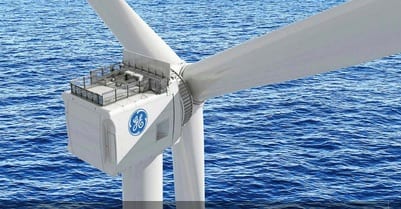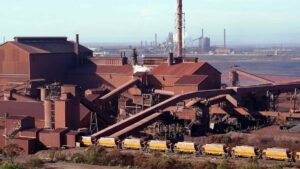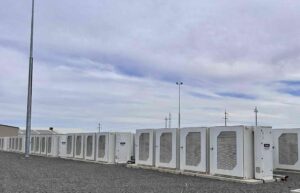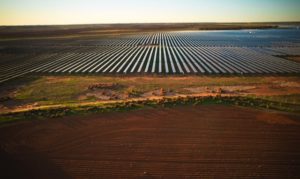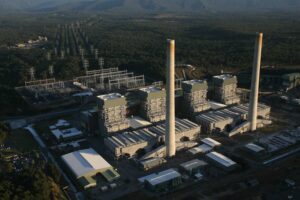US engineering giant General Electric has released its next-generation offshore wind turbine design, a whopping 12MW machine with a rotor star “five times the size of the Arc de Triomphe” and the ability to generate 67GWh of electricity a year – 45 per cent more than current best-in-class machines.
According to Recharge Wind, GE’s Haliade-X will use 107 metre long LM Wind Power turbine blades – almost 20 metres longer than the next biggest example – with each turbine able to produce enough electricity to power 16,000 European households. A 750MW wind farm would be able to supply one million homes.
The company is hoping to have the turbines ready for demonstration next year, the website said, and to begin shipping flagship orders in 2021.
“We want to lead in the technologies that are driving the global energy transition,” said GE chief executive John Flannery, quoted in Recharge. “Offshore wind is one of those technologies and we will bring the full resources of GE to make the Haliade-X programme successful for our customers.”
As we have noted before on RE, offshore wind – which has numerous technical and production advantages over its onshore cousin – is still hampered by its one major disadvantage; cost.
But this is starting to change. In the UK, two offshore wind schemes won contracts at record-lows of £57.50/MWh last September, putting them among the cheapest new sources of electricity generation in the UK, alongside onshore wind and solar. It also meant all three were now cheaper than new gas, according to UK government projections.
“We have seen the prices of offshore wind come down and down in the northern seas which has led to zero-subsidy tenders: this means European utilities are already banking on this kind of ultra-large turbine [that has levelled cost of energy economics] to make [these wind farms] economic,” said GE renewables chief Jérôme Pécresse in comments to Recharge.
“And 12MW is not the end, it is the beginning. We will go bigger. But this model will be an important step in making offshore wind cheaper in Europe today, the US tomorrow … and in China in a few years’ time when it moves to [machines of] 10MW-plus.”

